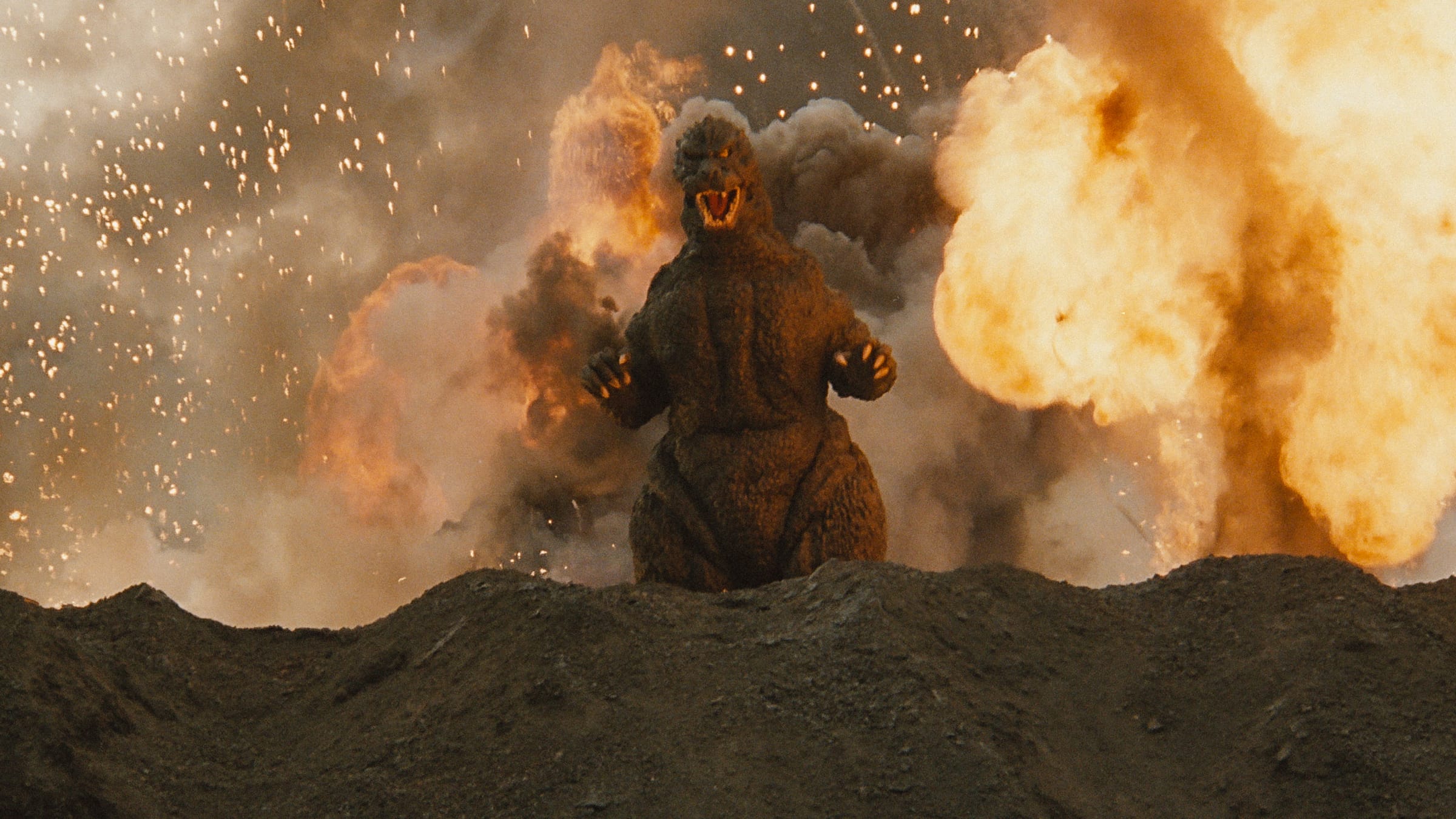RELATED ARTICLE
Godzilla: Poetry After the A-Bomb
By J. Hoberman
The Criterion Collection

After the dawn of the Japanese monster-movie genre (kaiju eiga) in the 1950s, one king reigned supreme for more than twenty years. Ishiro Honda’s atomic-age allegory Godzilla (1954) spawned not only a successful film series but an entire wave of popular entertainment—tokusatsu, or the Japanese special-effects movie. Throughout the franchise’s inaugural run of fifteen features—often referred to as its Showa era, after the historical period of Emperor Hirohito’s rule, during which the movies were produced—Godzilla and its symbolism thrived and evolved; the monster, initially framed as a harbinger of nuclear disaster, was reenvisioned first as an unyielding force of nature during the kaiju boom of family-friendly fare in the sixties, then as Earth’s trusted defender in a string of made-for-children superhero romps in the seventies.
It was toward the end of this period, however, that tokusatsu cinema began to wane, partly because of the high cost of making feature films amid the decade’s global energy crisis, as well as a flood of special-effects-driven television programs that were far less expensive to produce. In 1975, the studio that gave birth to Godzilla—Toho—put the character on hiatus, and it wasn’t until 1984 that the screen icon came roaring back to life, prompted by the box-office dominance of effects-laden Hollywood blockbusters in the eighties. This resurgence set the stage for Godzilla vs. Biollante (1989), which marked an invigoratingly ambitious new direction for the franchise at the outset of what is known as its Heisei era—a run of films coinciding with Emperor Hirohito’s son Akihito’s time on the throne—pitting the King of the Monsters against one powerful new adversary after another.
An expensive undertaking for Toho, Godzilla vs. Biollante was the studio’s attempt to widen the scope of its signature tokusatsu films by combining fresh ideas from other genres with enhanced state-of-the-art visual effects. The film was preceded five years earlier by Koji Hashimoto’s The Return of Godzilla, which had marked a departure from the lighthearted, kid-oriented tone the series had acquired in its most recent entries. By ignoring all prior sequels, that movie rekindled the spirit of Honda’s original, representing a direct continuation of not only its story line but also its antiwar, anti-atomic-weapons themes. But despite being a well-made spectacle, The Return of Godzilla proved a little too familiar to moviegoers, with its animatronic rendering of the creature reminiscent of Dino De Laurentiis’s 1976 reimagining of King Kong. Tomoyuki Tanaka—widely regarded, along with Honda and special-effects director Eiji Tsuburaya, as a chief architect of kaiju eiga—had produced every Godzilla film through The Return of Godzilla, and he understood that for the franchise to move into the future, a new approach was needed.

